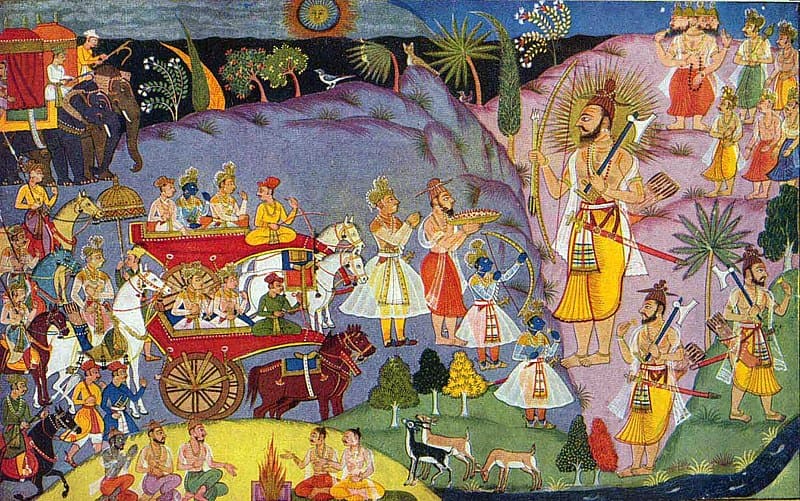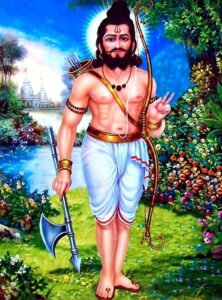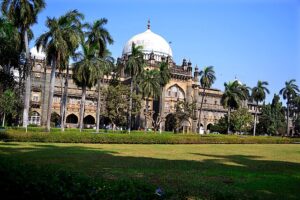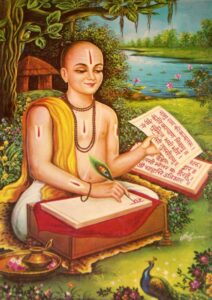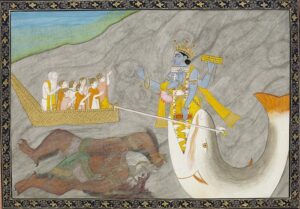Meeting of Rama and Parashurama
The painting (size 24.8 x 15.9 cm) illustrates folio 76 of a large MS. of the Balakanda of Valmiki’s Ramayana, painted by Manohar for one Acharya Jasavant, in V.S. 1706 (A.D. 1649) at Udaipur in Rajasthan. To the left are Rama and his brothers on chariots accompanied by Dasaratha, who rides a white horse, and numerous retainers. In the centre they are shown standing on the ground after dismounting. Opposite them is the gigantic form of Parasurama holding his axe and behind him are the gods, amongst whom Brahman is easily recognizable. Below we again see Rama and Parasurama facing each other, and to the extreme right we observe the sage walking away, apparently satisfied.
The artist has actually combined three scenes in one picture, namely the marriage procession, the encounter between Rama and Parasurama, and finally Parasurama’s departure.
The Museum acquired nineteen folios of a dispersed Ramayana set painted during the patronage of Maharana Jagat Singh I (1628-52 CE), whose atelier was crowned by two great artists: Sahebdin and Manohar. The king seems to have been particularly interested in large and extensive illustrations of the epics and the puranas. Though Mewar paintings are known from the time of Chawand Ragamala dated 1605 CE, the Mewar style was properly defined by the paintings of these illustrated manuscripts. Sahebdin and Manohar continued to a great extent with the Indian colour tonalities, flat backgrounds, prominently Indian narrative style and bold draughtsmanship. The colophon reads: In Samvat 1706, on the thirteenth day of the dark half of Margasirsha, Thursday, in the city of Udaipur situated in Mewar, in the victorious reign of Maharajadhiraj Maharana Jagat Singh, the painter Manohar (illustrated the manuscript).
The book was written by Mahatma Hirananda at the command of the teacher Jasvantji.

